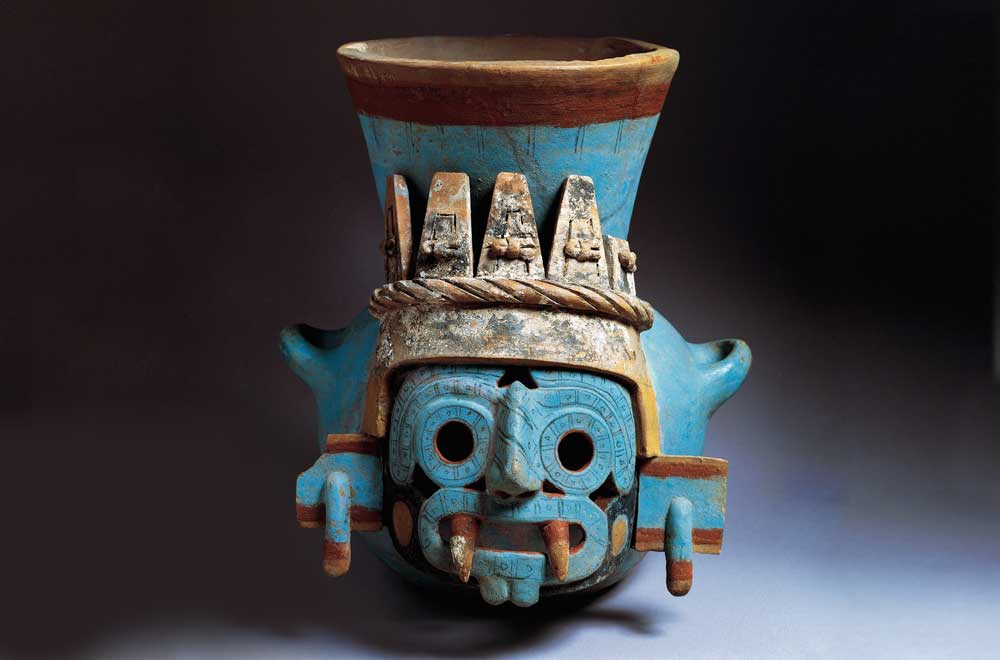Tlāloc | History Today - 2 minutes read

Tlāloc is a pan-Mesoamerican god of rain and earthly fertility. Principally recognised as a chief deity of the Aztec (or Mexica), earlier Zapotec and Mayan civilisations worshipped a similar rain and fertility god, known as Cocijo and Chaac respectively. For the Aztecs, Tlāloc was ‘the living embodiment of the earth’. He is still venerated by several indigenous Mexican communities.
Although the cult of Tlāloc flourished during Mesoamerica’s post-Classical period (900-1521), it is believed that he was first worshipped at the ancient city state (altepetl) of Teotihuacan in the Valley of Mexico. Teotihuacan was founded around 100 BC and is famous for its pyramidical temples, on top of which sacrifices were made during highly ritualised religious ceremonies. According to the historian Philip P. Arnold, around half of these were dedicated to Tlāloc.
Iconographically, Tlāloc’s main features are circular exophthalmic eyes, a curved upper lip and prominent fanged teeth, resembling those of a jaguar; several jaguar skulls have been found in shrines dedicated to Tlāloc. His essential attributes are a lightning bolt, often resembling a serpent, held in one hand and an effigy vessel from which he pours water in the other. One such vessel, dating from the 15th century, is shown here. It was found at the Templo Mayor at t, which today forms the historic centre of Mexico City.
Essential to understanding the importance of Tlāloc is the interconnectedness of the universe (cenanahuac), in which the earth was considered a land mass completely surrounded by water. Topological features, such as mountains, were seen as giant receptacles and the oceans were celestial waters, which extended vertically to meet and merge with the sky. Tlāloc’s role was to control and direct the earth’s waters, thus guaranteeing a plentiful harvest. Although hundreds of vessels, frescoed images and sculptures bearing some of Tlāloc’s features and attributes have been excavated, it is now thought that many actually represent other deities from the vast pantheon of Mesoamerican gods. These include Tlāloc’s consort, Chalchiuhtlicue, associated with rivers, seas, storms and childbirth, and Tlalogues, or ‘rain dwarfs’, who represented climate conditions including lightning, sleet and snow.
Source: History Today Feed